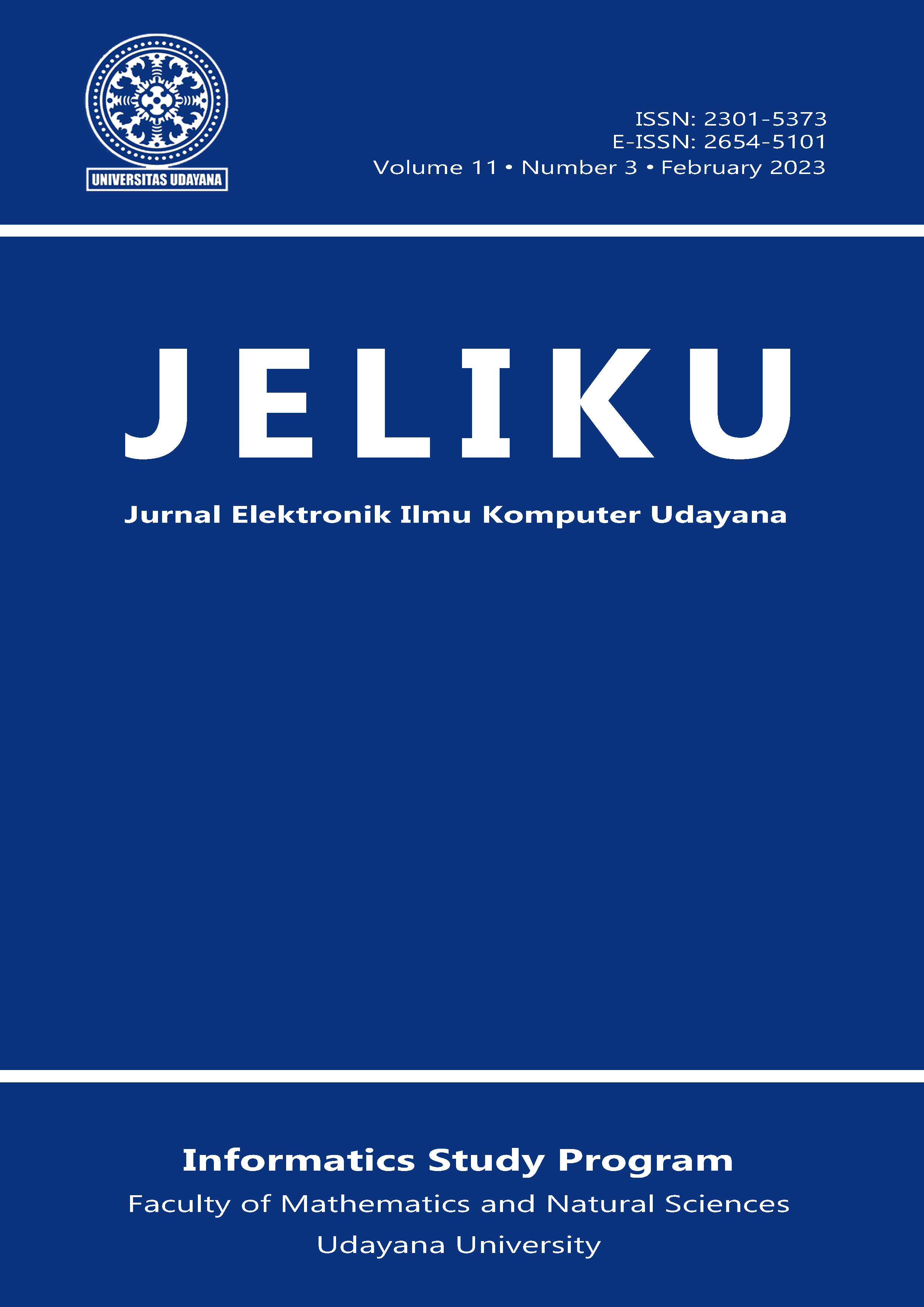Analisis Sentimen Berbasis Aspek Ulasan Pelanggan Hotel di Bali Menggunakan Metode Decision Tree
Abstract
The main means of tourism is the accommodation industry. Therefore, accommodation cannot be separated from the tourism industry because they both need each other. One of the accommodations that is most closely related to tourism is hospitality accommodation. With the increasing number of hotels in Bali, the hotel certainly needs the right marketing strategy. So, it is necessary to process customer reviews automatically to determine sentiment analysis based on customer reviews based on certain aspects. In this study, the author builds a model for aspect-based sentiment analysis using the Decision Tree method. The data used in this study is hotel customer review data in Indonesian language. Evaluation is done by measuring the performance of the Decision Tree model. The Decision Tree model for aspects produces performance, accuracy, precision, recall, and F1-Score, respectively 82,5%, 80%, 90,9%, and 85,1%, the Decision Tree model for service aspect sentiment produces accuracy, precision, recall performance , and F1-Score, respectively, which are 75%, 72,7%, 80%, and 76,2%, while the Decision Tree model for the sentiment of cleanliness aspect produces performance of accuracy, precision, recall, and F1-Score, respectively, which is 81,8%, 87,5%, 77,8%, and 82,4%.






